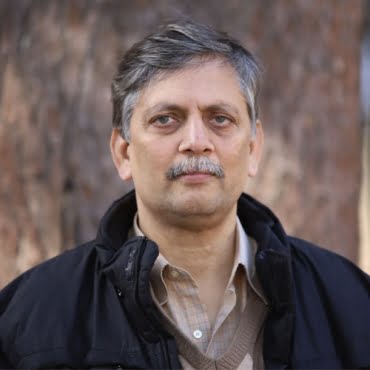Why India doesn’t watch Indian documentaries?
Article by: Gyaneshwar Dayal
Have you ever paid to see an Indian documentary? I am sure most people haven’t and the chosen few who paid for it paid to the OTT or their cable TV subscription and not for the documentary per se. Why is it that the country that makes the maximum number of feature films in the world does not have a documentary watching culture? Why is it that the documentary films have remained a nonstarter in the country that loves to watch cinema. And if you say Indian audience is just not educated enough for the documentaries you miss the point. There is indeed a big audience for such films, if you don’t trust me go to any documentary film festival where people fall over each other to secure a seat.

We have come a long way from the sixties and seventies when Films Division showed clips of prime minister’s foreign trips or visiting dignitaries as documentaries and people walked out thinking it was time to go to the restroom. These boring documentaries were shown because there was a government institution whose sole job was to make documentaries and the government could dictate its terms to theatre owners. These documentaries were of the government and by the government. Doordarshan the public broadcaster in 80 took it to the next level. This was the golden age of Doordarshan style documentaries. In the days of Doordarshan, the documentaries that were made had a purpose – to fill the airtime and make money. So there came a breed of documentary filmmakers who were happy to make documentaries about Mangos and Forts of India. Everyone was happy except the viewer.
The documentary filmmakers couldn’t less. The result was that never an audience could be nurtured and cultivated which could relish documentaries and could sit through a feature-length documentary of one hour. Which was typically less than half of the time normally taken to watch feature films. The present sorry state of documentary filmmaking in the country stems from this legacy. It has had a lasting effect. Today no one wants to pay for documentary films. There is a total disconnect between documentaries and the audience. People would rather buy a ticket to watch a C-Grade blockbuster rather than watch a well made documentary.
And it is not only the fault of the system or audience, but the documentary filmmakers are also to blame. They all thought they had made a good film even if it was like pushing a bitter pill down the throat of a child. In their defense, they said that the Indian audience was not mature enough. They however never asked themselves if they were mature enough to come down to the level of their audience. Unlike in the West we hardly ever have a theater release of a documentary. The documentary is something that should be made on funding and seen for free. Who buys a documentary or who goes to watch a documentary in a theatre? It is largely a film festival phenomenon (which can be counted on fingers) and sidekick filler for major national film festivals.
Some very talented filmmakers tried to make a documentary or two and soon realized that it was a nonstarter, so they moved to the feature film which promised fame or money and sometimes both. Not to say that parallel cinema was not worth it, but the people who could make good sellable documentaries just did not give enough effort; skilled directors like of Satyajit Ray, Shyam Benegal, Prakash Jha, Kabir Khan or Anurag Kashyap moved past the documentaries and carved a niche for themselves in “parallel cinema”.
The documentary filmmaking is closely related to activism. Have you recently heard of a film being made or shown on lynching, Shahin Bagh or for that matter Migrant laborers moving on foot in wake of lockdown? It is not that these films were not made; the truth is it would never reach the audience. The documentary TV channels or the news channels simply do not have guts to broadcast a hard-hitting documentary or a documentary that uncovers some inconvenient truth, so they are happy to show documentary on ancient aliens or efforts to find the hidden treasures. To watch these documentaries you would have to go to New York or Toronto.
It is not that the informative documentaries are not documentaries. It is like saying that feature film should only be about lost brothers. The Indian documentary filmmakers made the whole genre a nonstarter by either catering to the foreign audience or making films on topics that nobody bothered except their funders. The big established names in Indian documentary filmmaker were happy to make films for their funders who they easily find but never shed a tear about the home scene for documentaries.
It is not to take a pessimistic view about the future of documentary films. Indeed good Documentary films are being made in India, but little is done to make them commercially self-sustaining. The foreign funds are not enough to make Indian documentary films sustainable. No art form ever thrives on doles and state funding. It should be sellable to its audience else it dies a slow death. Even funding kills the spirit of the documentary as it is tailor-made as per the wishes of the funder.
Even nonprofits who are a big source of funding for documentary films don’t hesitate to put their promotional angle in the film. So theatre release is the only way out. And it is not as difficult as it may sound. If there were provisions of bank loan for such films and not grant the documentary filmmaker would indeed make it happen as he has to reach his audience. A cinema ticket one fourth the price of ticket of a feature film, assuming it was tax exempted would make it commercially viable To make the documentary filmmaking an independent and free from external pressures, the documentary filmmaker must have a way to finance his venture. unlike in the West, where documentaries can be shown on dedicated documentary channels like Channel 4, we are still waiting for such a channel.



